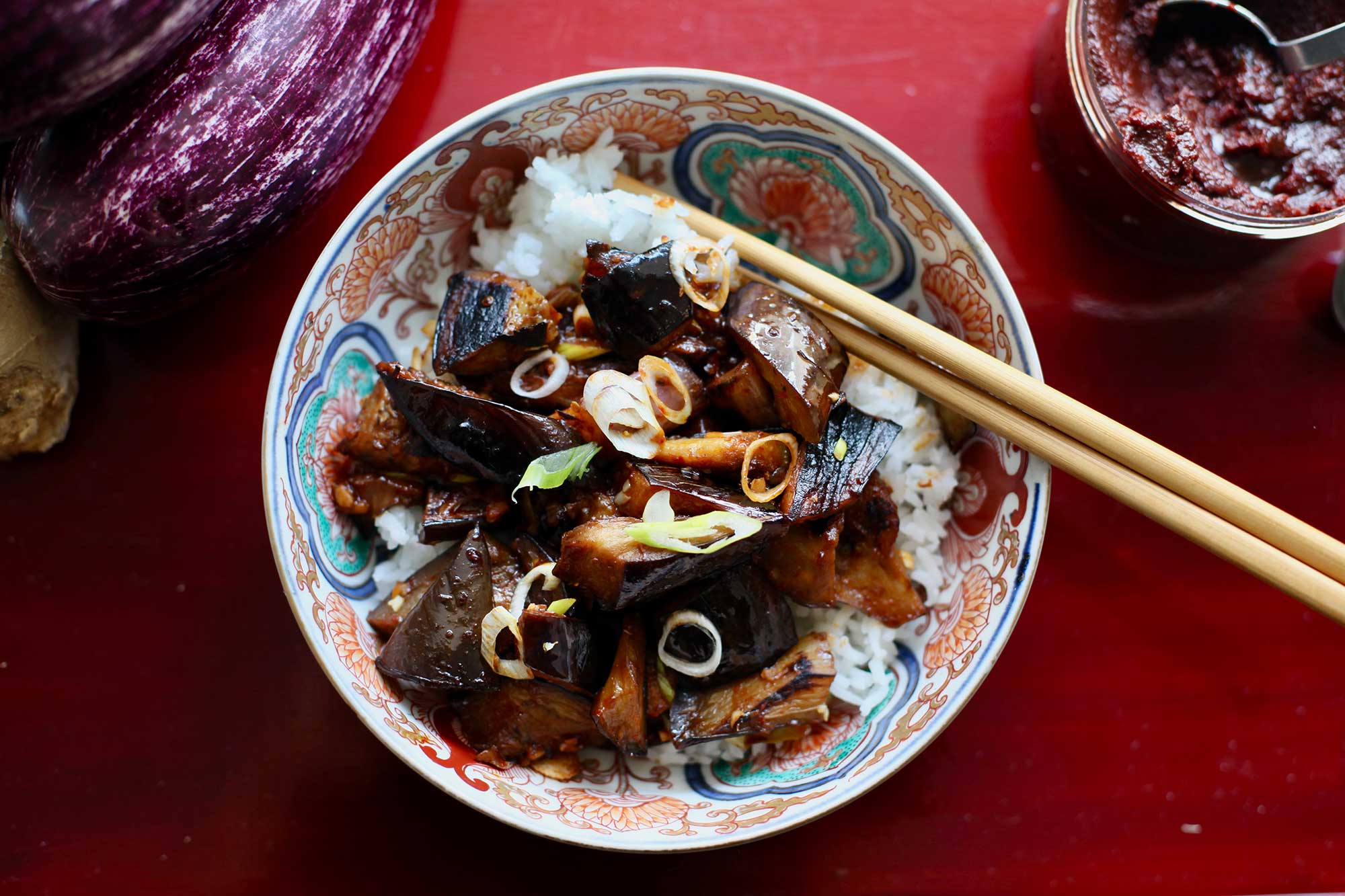This story is part of On Repeat, a series in which we ask top chefs, cookbook authors, and other famous foodies about the dishes they just can’t quit.
For this week’s edition of On Repeat we’re talking spicy eggplant with Mitchell Davis. Dubbed one of the “100 Greatest Home Cooks of All Time” by Epicurious, Davis is a food-industry consultant and former chief strategy officer at the James Beard Foundation. Nowadays, he also recounts his culinary adventures in the Kitchen Sense newsletter, where he recently shared his go-to recipe for Sichuan eggplant, a dish he’s been enjoying practically all his life.
“I call it Sichuan eggplant, because that’s how I first encountered it as a kid growing up in Toronto in the Sichuan restaurants we went to in Chinatown,” he says. He’s since learned—from Fuchsia Dunlop, author of seven books about Chinese food, whose recipe he uses—that it’s known as fish fragrant eggplant. “It’s a name that puts some people off because they think it has fish in it, but it doesn’t—it’s just got the flavor of Sichuan fish dishes,” Davis says.
Why I love it
“I love making things that don’t taste like the normal flavor profile of my food. So when something really tastes like it came from a Chinese restaurant, or feels like it came from a different kitchen, I love that. What I love about cooking is how ingredients can come together in different ways and feel like they came from somewhere else. And I love that about eggplant in particular.
“Another thing I love about eggplant is its texture. Especially in Chinese dishes or Middle Eastern dishes, you usually cook the eggplant and season it in a two-step process, and that turns the eggplant a silken, creamy texture and I think it’s remarkable.”
What I’ve changed
“I am constantly only using things I have. To extremes: I’m known as the person who will find a way to use a few tablespoons of French toast batter because I just can’t throw it away. If you get outside the idea of specific ingredients, and think about what they’re contributing to the dish, they become much easier to use. It’s the way you can cook sustainably. Nothing makes me crazier than a recipe that makes me go out and buy 10 ingredients I’m not going to cook anything else with.
“So one of the key ingredients in Sichuan eggplant is doubanjiang, the Sichuan Chinese spicy fermented bean paste. I have a closet full of things called bean paste. I’ll use Korean doenjang, or even miso. Really what you’re adding is salt, spice, and umami, and they all work because they’re all fermented bean paste. You also don’t have to use black Chinese vinegar. I remember years ago I was interviewing Susanna Foo, the great Sichuan chef in Philadelphia, and she used balsamic vinegar, which to her palate was more like what black vinegar was supposed to taste like than bad black Chinese vinegar sold here.”
What else I’m into right now
Beans Is How. I’ve been involved in this Beans Is How campaign, which is all about increasing global bean consumption. I try to do my part by eating a few more handfuls myself, but it’s hard because my husband dislikes them. So I often just make a pot of beans and keep them in a quart container and I sprinkle them on what I’m eating. I would throw a handful into that eggplant dish.
Stainless storage. When we were in India earlier this year I bought almost 100 stainless-steel canisters in a market in Jaipur to organize my stuff, because I’m sick of plastic. They’re really great. They’re tight, they’re cheap, and they stack; they’re like Russian dolls.
Cedar composters. I’ve been researching composters. If you were to look at my computer screen right now, I’m looking at four different cedar compost containers—frames that we can put outside. I’m trying to find the best place to use it, so it doesn’t attract bears and is close to where I’ll use the compost.

